Bicycle Touring Pro’s Cold Weather Bike Camping Gear List (2022 Updated)
This cold-weather bike camping gear list would be perfect for a bicycle tour in Iceland, Norway, Russia, Alaska, and/or many other parts of the world where you have a high likelihood (even in the summertime) of encountering cold, wind, hail, and snow.
Planning a bike tour in certain parts of the world at certain times of the year requires a unique list of clothing, gear, and accessories. So, a cold-weather bike camping gear list like the one on this page will help to ensure you’ve packed everything you need for a bicycle touring adventure in a cold and, potentially, snowy part of the world.
In the summer of 2017, I rode my bicycle from Umeå, Sweden to the Nordkapp in northern Norway. Then, once reaching the Nordkapp (also known as the North Cape), I turned around and began cycling back south, through Lapland Finland, to the city of Umeå, Sweden.
It was a month-long bicycle touring adventure up above the Arctic Circle and the above video details everything I brought with me. For 2022, I’ve updated this list with some new recommendations (and old favorites) to keep you riding year-round.
As I’ve said with my previous bike tour packing lists, I encourage you to use this packing list as a rough guideline for your own bicycle touring adventures… or (better yet) see my book, “The Bicycle Touring Blueprint“ for more information on what to pack, how heavy your bicycle should be, what type of bicycle and gear you should be using, how to get yourself and your bicycle/gear to the start of your bike tour, what to expect once you hit the road, how to find free and cheap places to stay each night, and a whole lot more.
After looking through the list of items on this page, please see my notes at the bottom of this article for comments on what I packed, why I packed it, and how frequently certain items were actually used. Or click here to learn more about winter cycling.
Without further ado, here is my 2022 cold-weather bike camping gear list:
![]()
The Co-Motion Cycles Sisikyou touring bicycle is a unique bike because it has 650b wheels and tires, and instead of the traditional chain and derailleur setup found on most bicycles, I opted for a Pinion gearbox and a Gates carbon drive system, which proved to be both reliable, smooth and easy to use.
![]()
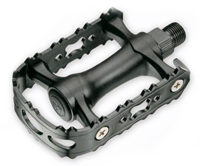
I usually cycle with a pair of SPD shoes and pedals, but for this particular bike tour I wanted to only pack a single pair of shoes, so I opted for flat bike pedals and a single pair of firm-soled hiking shoes. My shoes did get wet on occasion, but in the end this choice worked out okay.
![]()
The Axiom DLX Streamliner Disc is an inexpensive rear bicycle rack with a narrower profile than many other rear bike racks. This ultimately reduces the space at the top of the rack for carrying gear (or in my case, my solar charger), but otherwise it’s a good, inexpensive bike rack. Also comes in a non-disc version.
![]()
The Axiom Journey DLX Low Rider rack is a tried-and-true front rack option, I’d highly recommend it. Also check out the disc- and suspension-specific option, though the original should work with most disc-equipped bikes.
![]()
I wasn’t sure if I’d need to buy new fenders for my bicycle, as the 650b wheel/tire size is totally new to me, but as it turns out, the inexpensive fenders produced by Planet Bike that I’ve used on my previous bike tours worked just fine. The Cascadia model is a bit more rugged and comes in a number of sizes.
![]()
I’ve got two of these reliable Delta water bottle cages mounted to the frame of my touring bicycle.
![]()
These Polar “Muck Insulated” bottles keep water cold and dirt-free on muddy, dusty roads. For the purists out there, I’ve used these standard bottles for years as well.
![]()

The Ortlieb Bike-Packer Plus panniers are my favorite bicycle touring bags. They’re large enough to carry all my gear, completely waterproof, and good-looking. The pannier is shown here with a shoulder strap, but I don’t pack or carry that strap with me when I’m touring. This is the same pannier I’ve been traveling with for many, many years. Plus, you can support Bicycle Touring Pro and buy yours from the store!
![]()
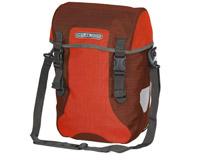
Ortlieb Sport-Packer Plus panniers are perfect, waterproof bicycle touring panniers for the front of your bicycle. Once again, the product is shown here with the included shoulder strap, but I do not pack or carry this strap while I am on the road. Plus, you can support Bicycle Touring Pro and buy yours from the store!
![]()

The Ortlieb Ultimate6 Handlebar Bag is one of my most commonly used pieces of gear. I use this large handlebar bag to carry my wallet, cameras, and various bicycle tools. When I go into a supermarket or leave my bicycle for any length of time, my handlebar bag comes with me. Plus, you can support Bicycle Touring Pro and buy yours from the store!
![]()
I’ve been using this Knog Blinder Road for several years now and it continues to function well for my travels by bike. I rarely use it on the bicycle (mostly just for cycling through tunnels), but I do use it quite often as a light for the inside of my tent in the evenings.
![]()
The Blackburn Dayblazer rear light has worked well for me on previous bike tours, so I opted to bring it with me on this bike tour as well. The battery lasts quite a while and I never had any other problems with the light during my travels.
![]()
The Cateye Padrone Plus is a very basic wireless bicycle computer which will tell you your speed, distance for the day, maximum speed, average speed and overall total distance. It doesn’t do much more than that, but I’ve found that that’s all I really want or need in a bicycle computer.The extra-large text is great too.
![]()
I use this short bungee cord to carry my tripod and solar charger on the top of my rear bicycle rack.
![]()
The Lezyne Sport Drive HV hand pump is an inexpensive bicycle pump, but it has worked flawlessly for me on several different bike tours over the last two years, so I decided to bring it with me to Northern Europe as well. It’s compact, lightweight, and easy to use.
![]()
The Crankbrothers M19 multitool is the only one you’ll ever need. Pick one up, you won’t regret it. It even has a chain breaker for those roadside emergencies.
![]()

This is the same small (but not very light) pedal/S&S coupler wrench that I’ve been carrying with me for the last several years. I use the wrench to install and remove my pedals, as well as to tighten and loosen the S&S couplers on my touring bicycle. These S&S couplers allow me to split my bicycle in half. See my review of the Co-Motion Co-Pilot travel case for more information on how this works.
![]()
My fenders have a small 10 mm nut that is used to hold the fenders in place over the tires. Therefore, I have to carry this small wrench with me in the event that these nuts should ever come loose or need adjustment.
![]()

Rack, fender and water bottle screws are notorious for wiggling loose during the long days of cycling on a bicycle tour. That’s why I always carry at least two or three extra rack screws with me – just in case.
![]()
If I get a flat tire, I can usually repair the flat with a basic repair kit and two additional plastic tire levers.
![]()

In the event of a flat tire, I always have at least one spare bike tube on me at all times. I wasn’t actually able to find a 650 tube for my new touring bicycle, so for this particular bike tour I carried a 26″ tube with me – just in case (for emergencies only). I never got a flat tire on my month-long bike tour to the Nordkapp in northern Norway, so I never had to use it.
![]()
The Big Agnes Copper Spur UL is a small, lightweight tent that feels pretty big inside once you set it up. I bought this tent several years ago because of how small and light it is and it has turned out to be my favorite bicycle touring tent ever. Highly recommended!
![]()
I’ve used dozens of different sleeping pads and mats over the years, but the Vaude Tour is, by far, the best sleeping pad I’ve ever used. It’s perfect for summer bike touring, but not the best for winter cycling expeditions. The thing I like best about it is that it is reliable. I’ve had this sleeping pad for more than four years and I’ve never had even a single problem with it.
![]()
The Marmot Sawtooth sleeping bag is a medium-grade wintertime sleeping bag that is perfect for cold-weather bike tours. The Sawtooth is a down sleeping bag rated for temperatures of more than 15 degrees Fahrenheit (or -9.4 Celcius). It takes up a fair amount of space on the bike, but it’s worth it’s extra size when it comes time to crawl inside your sleeping bag at night.
![]()
The MSR PocketRocket is a small, lightweight camp stove that is perfect for those who have the option and ability to travel with a propane/butane fuel canister. The stove is compact, lightweight, easy to use and allows you to control the temperature of your food with a simple twist of the nozzle.
![]()
If you opt to carry a camp stove like the MSR PocketRocket (listed above) then you’ve got to pick up one or more of these fuel canisters for your travels. I burned through two of these medium-sized Primus fuel containers during my month-long bike tour to the Nordkapp in northern Norway.
![]()
In addition to the camp stove and fuel canister, you need to carry a small cook pot and lid like this titanium cook pot and pan from Toaks.
![]()
This small folding knife is carried in my handlebar bag and can be accessed quickly if need be. But the main purpose for this knife is for food preparation.
![]()
A lightweight titanium spork is the only kitchen utensil I carry with me on my bike tours these days (unless you count my folding knife, of course).
![]()
The Giro Register isn’t a high-end bike helmet, but it fit my head well and is relatively comfortable. I wish the visor were a little bigger (to help shield me from the sun), but otherwise it is a nice, inexpensive bicycle helmet.
![]()
I bought this long-sleeved cycling jersey from Fox, thinking that I would rarely, if ever, wear it, but it has turned out to be my favorite cycling jersey ever. The jersey is light enough that I can wear it even in hot weather, and because it’s long-sleeved, it’s perfect for wearing on cold-weather bike tours as well.
![]()
I don’t ride in a pair of special bicycle shorts. I just cycle in a pair of black Hurley shorts – like the kind you might find at your local surf/skate shop.
![]()
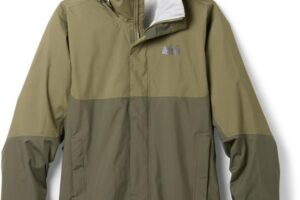
The REI Rainier rain jacket is lightweight, super compact, waterproof and great for blocking out the wind. It can be squeezed into any empty spaces you might have inside your panniers, but it isn’t very warm, so it needs to be used in conjunction with a warmer, insulating jacket.
![]()
My main insulating layer is a fleece jacket from Colombia. I wore this jacket on my bicycle many days, as well as wearing it around camp in the evenings and inside my sleeping bag at night. This fleece jacket is one of my most important cold-weather items!
![]()
This Eddie Bauer jacket took up a lot of space inside my panniers, and I ultimately could have done without it, but on the few occasions when I did need it, I sure am glad I had it. I only wore this jacket around camp at night and in my sleeping bag at night.
![]()
For sleeping in cold weather, I pack a small, light and compact pair of fleece pants. These pants are great to wear inside my tent in the evenings and were on my body almost every single night as I lay inside my sleeping bag. I also prefer the jogger versions that are tighter around your ankles – which keeps the legs out of your chain if you end up riding in them at all!
![]()
I’ve got a basic set of North Face rain pants that I wear mostly when the weather is chilly – not necessarily when it is raining. Not only are these pants useful for cycling in during cold/wet weather, but they can also provide an extra layer of warmth at night if you chose to sleep in them.
![]()
In addition to the rain pants I was carrying, I also packed and occasionally wore a heavy-duty set of snow pants from The North Face. I only wore these pants on very cold and windy days (because I would get hot and start sweating otherwise), but the snow pants certainly were nice to have when the weather made a turn for the worse.
![]()
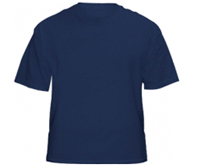
In addition to the single bike jersey I packed and wore on the bike each day, I also had a couple regular T-shirts that I wore to sleep in at night and wear around town or in my campsite in the evenings.
![]()
I rotate between the two pairs of Merino underwear that I carry – with one pair almost constantly being in the process of being cleaned or dried. Icebreaker is a great brand.
![]()
If you plan to go cycling in a part of the world where you know it’s going to be cold, then you need to have a good pair of lightweight cycling gloves. I use a pair of Giro mountain bike gloves.
![]()
In addition to the lightweight gloves I carry, I also pack and occasionally ride in a pair of full-blown winter snow gloves – the kind you might go skiing or snowboarding in. These are especially good to have when the temperature drops below freezing.
![]()
As soon as my bike helmet comes off my head, I immediately place this black baseball cap onto the top of my head. It’s 100% necessary for covering up helmet hair after a long day in the saddle.
![]()
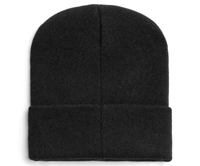
I pack a lightweight fleece beanie to keep my head warm around camp and at night while I sleep.
![]()
If you cycle during cold weather conditions, then a full-face balaclava is a nice item to have. It’s very useful for keeping your ears, cheeks, mouth, chin and nose warm as you cycle in cold weather.
![]()

I packed three pairs of black socks on my bike tour in northern Europe. These are the socks I wore on the bike each day. Sometimes, when the weather was really cold, I would wear two pairs of these socks – one on top of the other.
![]()
Around camp and in my sleeping bag at night, I’d wear a thick pair of socks like these from Darn Tough.
![]()
Instead of packing two separate pairs of shoes (one to wear while riding the bike and the other to walk around in) I decided to pack only a single pair of flat-bottomed shoes for my bike tour in northern Europe. I picked up these Quechua Forclaz Flec 3 hiking shoes in Romania a couple years ago and decided to wear them on this trip because the sole of the shoe is so incredibly firm – which is good for cycling and hiking. The shoes are also fairly warm.
![]()
A quality pair of sunglasses are essential on a long-distance bike tour.
![]()

In addition to the sunglasses themselves, it’s also a good idea to carry a lightweight sunglasses case, which you can place the sunglasses inside of whenever you remove the glasses from your face. This was the sunglasses don’t get broken or damaged when you aren’t wearing them.
![]()
This was my first time using the Canon G7X Mark II on any of my bike tours and I really liked this camera as a high-end video and photo camera. The only thing about this camera is that in the wind, the audio is very bad.
![]()
In addition to the camera itself, I also packed a battery charger and three spare batteries for my Canon G7X Mark II.
![]()
I packed a backup point-and-shoot camera with me on this particular bike tour, mainly because I wanted to make sure I had enough battery power for documenting all of my travels on the Bicycle Touring Pro YouTube channel. The OLYMPUS Tough TG-6 camera isn’t quite as good as the G7X Mark II, but it’s a good backup and is also waterproof for cold, rainy days.
![]()
Just like with the G7X Mark II, I packed a battery charger and two additional batteries for my OLYMPUS point-and-shoot camera.
![]()
I packed a GoPro Hero video camera and used it to get a few action shots on my bike tour, but this camera was honestly not used all that often. The GoPro is good at getting wide shots of me and my bike, but was not used for much more than that.
![]()
I secured the GoPro Hero video camera to my bicycle with the new GoPro bicycle handlebar/seatpost mount, which was quite useful for mounting the camera not only to my handlebars and seatpost, but in a number of other different places and positions as well.
![]()
For mapping out my route, listening to music/podcasts, learning foreign languages, and simply entertaining myself, the Samsung Galaxy A53 is one of my favorite bicycle touring essentials for the modern bike traveler.
![]()
I use this ToughTested BigFoot solar charger to keep my smartphone, GoPro video camera, and USB-powered bike lights charger while on the road. This solar charger works well even under low-light conditions.
![]()
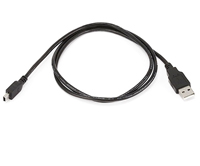
To charge my various electronics, I carried two different USB charging cables. One cable was used to charge my smartphone and bike lights, while the other was used to charge my GoPro video camera.
![]()
When I crawl into my tent at night, the first thing I usually do is put my earbuds in and start listening to a podcast. I will cycle with the earphones in my ears in some instances, but that rarely ever happens.
![]()
Because I travel alone and take great pride in documenting my bike tours, I travel with a Sony VCT-60AV tripod. It’s pretty big considering I was carrying only two small point-and-shoot cameras with me, but I like this tripod because it is so strong and reliable.
![]()
When traveling internationally, I always bring my Universal Power Adapter with me. This international adapter is a bit on the large side, but it’s lightweight and it has a USB charger on its side, which makes it super easy for me to recharge my smartphone, GoPro video camera and bike lights.
![]()
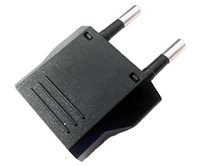
In addition to the larger international power adapter, I brought a much smaller USA to European power adapter with me so I could charge more than one device at a time. This, for example, allowed me to charge two camera batteries at once.
![]()
All of my toiletries are carried in this single GOX toiletry case. I have not listed the individual toiletries that I carried, but I will tell you that for this particular bike tour I did not pack a camp towel. I basically just had a toothbrush, floss, toothpaste, deodorant, soap, tweezers and nail clippers.
![]()
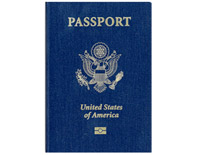
As an international traveler, I don’t go anywhere now without my passport.
![]()
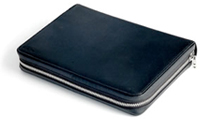
I bought my Buxton zippered travel wallet at Staples several years ago and have been using it as my go-to bicycle touring wallet. I like the fact that it is zippered, so I don’t have to worry about my cash, credit cards or ID falling out.
![]()
Finally, I always go bicycle touring with a lightweight journal and a single ballpoint pen. Field Notes notebooks are waterproof and hold up really well. While my smartphone can be used for all sorts of note-taking, there are certain times when a good old-fashioned pen and paper are exactly what you need.
![]()
That is my complete 2022 cold-weather bike camping gear list.
I think this is a pretty good packing list for a cold-weather bike tour. I don’t use my snow pants or the big down jacket very much, and I could have gotten away without those two items in the past, but everything else I would probably pack and carry with me again on a similar cold-weather bike tour.
Want to see more bike tour packing lists like this one? Click here to see how this gear list compares to what I carried on my 2015 bicycle touring expedition, my 2016 bike tour in Europe, or my recent bike tour in Ecuador and Colombia in South America.
If you want to see a good lightweight packing list, please see this article I’ve written on the subject or pick up a copy of “The Bicycle Touring Blueprint,” which contains several different packing lists that you can use to plan and prepare for your own incredible bicycle touring adventures – wherever they happen to be in the world.
Finally, I need to reiterate what I have said with other packing lists I have published here on Bicycle Touring Pro: You should not necessarily pack like I am packing here. Every bike tour is different. Where you plan to go in the world, when you chose to travel, how long you plan to be on the road, what types of roads you plan to cycle on, and a whole host of other factors determine the type of bike you ride, the gear you use, the method you use to pack and carry your gear, etc. Use this packing list as a loose guideline for your own bicycle touring adventures, but please do not see it as something that should be emulated exactly.
If you have any questions or comments about anything I’ve mentioned in this article, please leave a comment below and I will respond to you just as soon as I possibly can. Thanks!

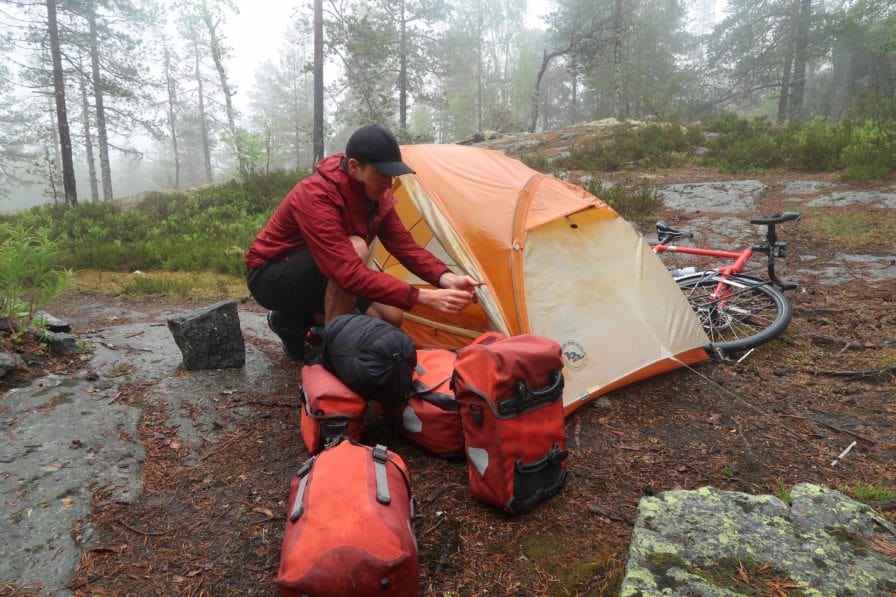
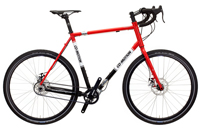
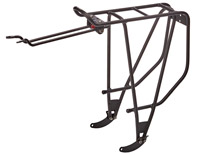










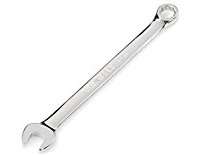
























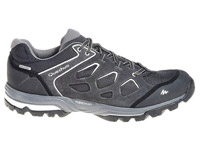














Hello Darren. My name is Steve Edmonds & I really enjoy reading your blog. Also I have watched your extensive YouTube videos as well. Sometime in the future I do intend to purchase one of your e-books that you have authored (The Bicycle Touring Blueprint).
I just started listening to you today. I bicycle quite a bit and have toured Kansas(BAK) ten times. I am now considering self contained and already have most equipment, including older Cannondale T1000 racks and packs. I just have to motivate myself and start. Your shoes help in that. Thank you. John
Just wondering what app you use on your phone for mapping routes etc?
I use an offline mapping application called Maps.me. I have several detailed instructional videos inside my video coaching course on how to use this app and how to map out safe and enjoyable bicycle touring routes anywhere in the world: http://www.bicycletouringpro.com/coaching
HI Darren. Are the socks you wear made of cotton or are they synthetic to help wick moisture and dry quickly? Thanks for taking me on your adventures virtually.
I personally just wear regular cotton socks, but you should do whatever makes you comfortable.
I was looking at your 200 tour special video and saw that it was raining and cold. You had s pair of green pants on and I was wondering if those were a brand other than north face. I live in Portland or were it rains a lot and ride year round. Just wondering if you have some advice on the best kind of pants to get for future bike tours. Thanks, hope you have many tours left in you.
Those green pants you see me wearing in the video are actually Patagonia ski pants. They aren’t really made for cycling, but I have worn them on several long-distance winter bike tours. Sadly, they don’t make this particular pair of pants anymore, so they are almost impossible to find or buy.
Hi Darren, very useful list thanks! I was wondering if your hands ever get cold in cold rainy weather, if your gloves get wet? Do you have any experience with waterproof gloves and would you recommend them?
Yes, my hands have definitely gotten cold on my bike tours. The worst is when I want to take a photo in the cold. Brrr. I talk about how to keep your hands warm inside the Winter Cycling book: https://www.wintercyclingbook.com If you are in really cold weather, I would recommend riding with waterproof pogies.
HI Darren ,
do you use an external microphone for your videos ?? or just the stock camera mic ??
im going to africa in january for 4 months , you been a great inspiration on keep the flame burning inside.
with you the best .
Santiago
I just use the built-in camera, because I’v found that external mics either use too many batteries or they get in the way when you are trying to shoot, pull the camera out of your bag, etc.
Have a great trip! Be sure to send me a photo of you and your bicycle once you get out there on the road. I’ve love to see that! Where in Africa are you going?
HII DAREN
Zanima me jakna Down Jacket koliko polnila ima in ime znamke
The down jacket I had on this trip was from Cabelas. I bought it when I was in Alaska. I’m not sure of the exact jacket type though. Just a thick, warm, down jacket.
Hey Darren. To this list I would add some goggles of some kind. Ideally ski goggles. One winter I started out touring in Scandinavia without goggles. It was horrible. It will greatly diminish the energy one expends in facial muscles. Also, for winter stealth camping I use a robust tarp (silver coated on one side) that is just large enough for it to work as a “footprint” as well as a variety of other purposes. This will reduce the wear and tear on your tent (which is what you want if you, like me, spent a lot of money on a 4 season tent). Silver side up it will furthermore reflect some of you bodyheat back at night during sleep. This is marginally significant, but a winter bike touring in Scandinavia, the marginals are what counts if you want to avoid being miserable, as you know. The idea of a tent footprint is noble (to reduce the stress on your tent) I just believe that the tarp is better (and a lot cheaper) because it’s multipurpose (The tarp also saved me at least twice from hypothermia). To your list I would also add a gps with openstreetmaps, but this comes down to preference with regards to navigation and I don’t go with “smartphones”. I prefer routes away from cars and traffic, and I find that only openstreetmaps allow one to locate weird and almost offroad tracks and trails, at least here in Scandinavia. One other thing. I do not use spd’s because my knees do not agree with this setup. However, especially during winter touring with a loaded bike, there’s a real chance of slipping if you just use regular pedals (did that several times) So, I go with old school clips, like the ones from the 70’s though they can be hard to find. I love touring and as you know, your gear list is a constant refinement. By the way, I’m real admirer of your work. I imagine that it cannot be eazy to bike around with all your electronisc equipment. I find it hard enough as it is to reduce the amount of stuff I bring on my tours. Having to bring a tripod and drone……ehh… But I really enjoy your videos, keep it up and good luck tot you.